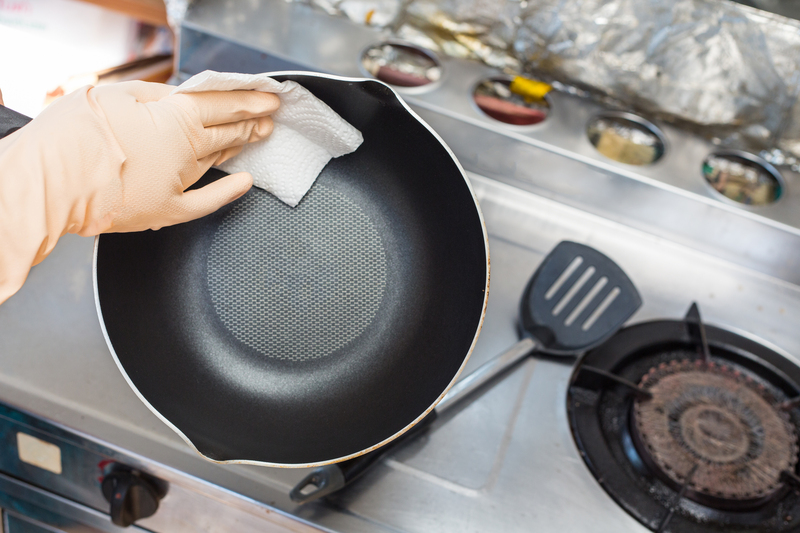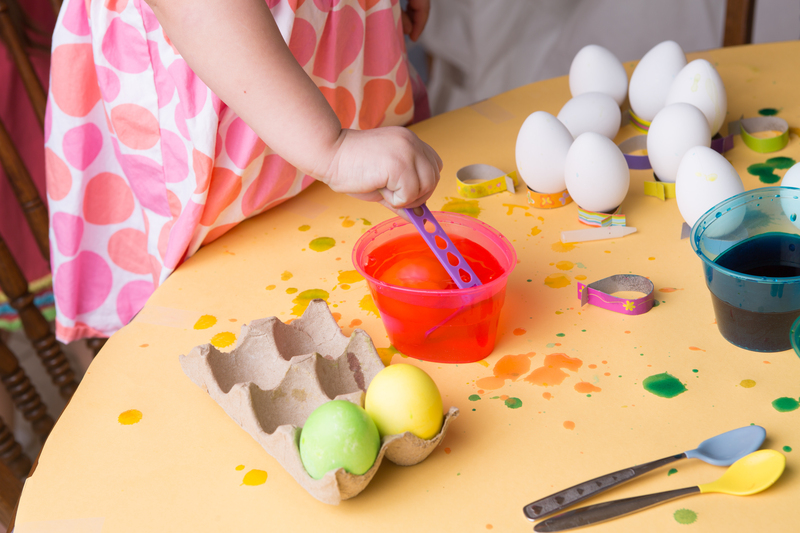Mastering the Art of Getting Rid of Damp Smell
Posted on 30/08/2025
Mastering the Art of Getting Rid of Damp Smell
There's nothing quite as unwelcome as the persistent, musty scent of dampness lingering in your home. Whether it's seeping up from the basement, infiltrating closets, or lingering in the bathroom, a damp smell can be both unpleasant and alarming. Not only does a musty odor impact your comfort, but it can also be a sign of potential health risks and hidden damage. In this comprehensive guide, we'll explore how to get rid of damp smell effectively and keep your living spaces fresh, clean, and healthy.
Understanding the Cause of Damp Smells
The first step to eliminating damp smells is understanding what causes them in the first place. Damp, or musty, odors are usually a result of excess moisture and poor ventilation, which create the perfect conditions for mold and mildew to thrive. The odor you notice is often caused by volatile organic compounds (VOCs) released by these fungi as they grow. Some common sources of dampness in homes include:
- Leaking pipes or roofs
- Condensation buildup on windows and walls
- Poorly ventilated bathrooms, basements, or closets
- Flooding or water ingress during storms
- Wet clothing or laundry left unattended
Identifying the specific source of moisture is crucial to conquering both the smell and the potential for mold growth.

Why You Should Not Ignore Damp Odors
Mastering the art of removing damp smells is about more than making your home smell nice. Persistent musty odors can have severe implications:
- Health Hazards: Mold spores can cause allergic reactions, asthma, and respiratory problems.
- Structural Damage: Moisture can degrade walls, floors, and ceilings, potentially leading to costly repairs.
- Reduced Property Value: Lingering dampness and mold can lower your home's appeal and value.
- Pest Infestations: Damp environments attract pests like silverfish and rats.
That's why it's essential to not only eliminate musty odors but also address their root causes.
Step-by-Step: How to Get Rid of Damp Smell
1. Locate the Source
Begin by finding where the moisture is coming from. Examine your home thoroughly:
- Check for leaks under sinks, behind appliances, and around windows.
- Inspect the roof and gutters for water ingress.
- Look for signs of condensation or standing water in basements and crawl spaces.
- Notice if the smell is stronger in particular rooms or areas, which could indicate hidden leaks.
Tip: Sometimes, the smell may be trapped in soft furnishings, carpets, or even in walls, so investigate thoroughly.
2. Ventilate the Area
Opening windows and doors is one of the fastest ways to get rid of musty odors. Fresh air helps dilute VOCs and remove excess moisture:
- Aim to ventilate daily, especially after activities that produce steam (e.g., showering, cooking).
- Install exhaust fans in bathrooms, kitchens, and laundry rooms.
- Move furniture away from walls to improve airflow.
3. Control Humidity
Excess humidity feeds the growth of mold and the persistence of damp smells. To keep indoor humidity in check (ideally between 40-60%):
- Use a dehumidifier in problem areas such as basements or bathrooms.
- Repair leaks promptly and dry any wet surfaces or fabrics.
- Utilize silica gel packs or moisture absorbers in small, contained spaces.
- Check for condensation on windows & walls and wipe it away daily.
4. Clean Thoroughly
Once ventilation and humidity are handled, deep cleaning is crucial for eliminating trapped odors:
- Wash all fabrics--curtains, cushion covers, bedding, and clothing--with hot water and baking soda or vinegar.
- Shampoo carpets and steam-clean upholstery.
- Scrub hard surfaces (walls, floor, tiles) with a mixture of water, white vinegar, and bicarbonate of soda (a natural odor neutralizer).
- Replace or deep-clean any air conditioning or heater filters.
5. Treat Mold and Mildew
If you discover visible mold growth, you must take extra precautions for both safety and effectiveness:
- Wear gloves, eye protection, and a mask to prevent inhaling spores.
- Clean small patches (less than 1 sq. meter) with a bleach solution (1 part bleach to 4 parts water) or dedicated mold remover. Never mix cleaning products containing ammonia and bleach.
- For widespread mold infestations, call a professional remediation service.
- Dispose of contaminated, non-washable materials like old insulation or carpeting.
6. Use Natural and Commercial Deodorizers
After cleaning, you might still notice lingering damp odors. Boost freshness with these solutions:
- Baking Soda: Sprinkle on carpets and upholstery, leave for several hours, then vacuum.
- Activated Charcoal: Place bowls of activated charcoal in problem areas--it absorbs odors naturally.
- White Vinegar: Set out bowls of vinegar to neutralize musty smells overnight.
- Commercial Odor Neutralizers: Look for enzyme-based products that break down organic odor molecules rather than simply masking them.
- Essential Oils: Add a few drops of tea tree, eucalyptus, or lavender oil to cleaning water or diffusers to impart a clean scent.
7. Maintain a Regular Cleaning Routine
Prevention is the ultimate weapon for mastering the art of getting rid of damp smell:
- Maintain gutters and downspouts to prevent water pooling near the foundation.
- Use moisture-absorbing sachets in closets and storage spaces.
- Air out rooms weekly and keep up with laundry to prevent wet items from lingering.
- Consider moisture-resistant paint or sealants in vulnerable areas.
Special Tips for Stubborn Damp Smells
Getting Rid of Damp Smell in Clothes and Closets
- Wash musty-smelling clothes with vinegar or baking soda added to the rinse cycle.
- Hang clothes in the sun whenever possible--the UV rays naturally kill mold spores.
- Store clothes only when completely dry, and add cedar balls or lavender sachets to repel mold and pests.
- For persistent odors, soak clothes in a solution of water and borax before washing.
How to Remove Damp Smell from Carpets
- Sprinkle baking soda liberally and let it sit overnight before vacuuming.
- Use a carpet shampooer with a vinegar solution (check compatibility with your carpet first).
- Raise the carpet to air out underneath, and use fans or a dehumidifier to dry fully.
- If the subfloor is wet or moldy, professional intervention may be needed.
Banishing Damp Odors from Basements
- Seal any foundation cracks to prevent water ingress.
- Install a sump pump if flooding is frequent.
- Run a dehumidifier constantly in damp seasons.
- Keep items off the floor and ensure good circulation around stored boxes and furniture.
Expert Products and DIY Solutions
Best Products to Remove Musty Odors
If DIY efforts aren't enough, several specialized products can boost your odor-fighting efforts:
- Ozone Generators: Effective at neutralizing tough odors, but only use in unoccupied spaces due to safety concerns.
- HEPA Air Purifiers: Capture mold spores and reduce airborne contaminants that contribute to damp smells.
- Moisture Absorbers: Commercial desiccants like DampRid can be strategically placed throughout the home.
- Enzyme Cleaners: These break down organic substances causing the smell at a molecular level.
DIY Remedies for Damp Odor
- Lemon or Citrus Peels: Place fresh peels in bowls around the home for a pleasant scent and mild deodorizing power.
- Clove Oil: Add a few drops to cleaning water to inhibit mold and impart a spicy, clean aroma.
- Coffee Grounds: Dried coffee grounds can absorb odors in cupboards and closets.

How to Prevent Musty and Damp Odors from Returning
Prevention is just as vital as removal when it comes to banishing musty odors permanently. Here are some actionable steps:
- Regularly inspect plumbing for leaks and address any moisture issues quickly.
- Keep your home well-ventilated year-round.
- Use waterproofing solutions in basements, crawlspaces, and bathrooms.
- Store paper, books, and clothing in dry, well-ventilated areas.
- Consider using smart home technology, such as humidity sensors, to monitor moisture levels.
Conclusion: Freshness Mastered
Mastering the art of getting rid of damp smell is a combination of detective work, diligent cleaning, and strategic prevention. By tackling both the cause and the effect of musty odors, you can safeguard your home's air quality, structure, and comfort. Remember, the keys are vigilance, ventilation, and prompt action. With these expert tips and proven solutions, you'll enjoy a fresher, cleaner, and healthier living environment--free from the grip of persistent damp smells!
Frequently Asked Questions
- What is the fastest way to get rid of a damp smell?
Open windows, use fans or dehumidifiers, and remove or wash any items that have absorbed the smell. - Are damp smells dangerous?
Lingering damp smells can indicate mold growth, which may be harmful to health, especially for those with allergies or respiratory conditions. - Can air fresheners remove damp smell?
Air fresheners may mask odors temporarily, but they do not address the underlying cause. Tackling moisture and cleaning thoroughly is essential. - How do I know if the damp smell is due to mold?
If you spot visible black, green, or white spots and a persistent musty smell, mold is likely present. Using a mold test kit or consulting professionals can confirm. - What humidity level should my home be?
The ideal indoor humidity is between 40-60%. Use a hygrometer to monitor and adjust as needed.
Take these steps to master the art of eliminating damp smells and enjoy a healthier, more pleasant home today!



